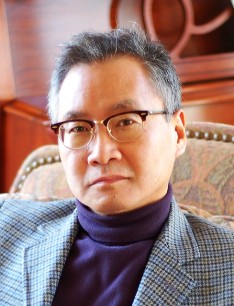
Myong-Hun Chang is Professor of Economics at Cleveland State University. He studied Operations Research & Information Engineering as an undergraduate at Cornell University. Upon graduating with a B.S. in 1984, he entered the graduate program in Economics at The Johns Hopkins University, earning a Ph.D. in 1988. His primary research interests are in industrial Organization, organization theory, and game-theoretic and computational modeling of social and behavioral dynamics. In addition to Cleveland State University, he has taught at The Johns Hopkins University and the Owen Graduate School of Management at Vanderbilt University as a visiting faculty.
His current and recent research projects include: 1) Computational and mathematical modeling of infectious diseases; 2) social dynamics of stigma; 3) industry dynamics; 4) corporate leniency program and the behavior of cartels; 5) endogenous social networks; 6) organizational structure. All of these research efforts employ game-theoretic and/or agent-based computational modeling techniques.
Selected Publications:
- “Spatially Heterogeneous Vaccine Coverage and Externalities in a Computational Model of Epidemics,” (with Troy Tassier), Computational Economics, 58 (2021), 27-55.
- “A Dynamic Computational Model of Social Stigma,” (with Joseph E. Harrington, Jr.), Journal of Artificial Societies and Social Simulation, 23 (2020), 2.
- A Computational Model of Industry Dynamics. London: Routledge, 2015.
- “When Can We Expect a Corporate Leniency Program to Result in Fewer Cartels?” (with Joseph E. Harrington, Jr.), Journal of Law and Economics, 58 (2015), 417-449.
- “Modeling the Birth and Death of Cartels with an Application to Evaluating Competition Policy,” (with Joseph E. Harrington, Jr.), Journal of the European Economic Association, 7 (2009), 1400-1435.
- “Innovators, Imitators, and the Evolving Architecture of Problem-Solving Networks,” (with Joseph E. Harrington, Jr.), Organization Science, 18 (2007), 648-666.
- “Agent-Based Models of Organizations,” (with Joseph E. Harrington, Jr.), in: Leigh Tesfatsion and Kenneth L. Judd, eds., Handbook of Computational Economics II: Agent-Based Computational Economics, Elsevier, 2006, 1273-1337.
- “Discovery and Diffusion of Knowledge in an Endogenous Social Network,” (with Joseph E. Harrington, Jr.), American Journal of Sociology, 110 (2005), 937-976.
- “Co-Evolution of Firms and Consumers and the Implications for Market Dominance,” (with Joseph E. Harrington, Jr.), Journal of Economic Dynamics and Control, 29 (2005), 245-276.
- “Multi-Market Competition, Consumer Search, and the Organizational Structure of Multi-Unit Firms,” (with Joseph E. Harrington, Jr.), Management Science, 49 (2003), 541-552.
- “Centralization vs. Decentralization in a Multi-Unit Organization: A Computational Model of a Retail Chain as a Multi-Agent Adaptive System,” (with Joseph E. Harrington, Jr.), Management Science, 46 (2000), 1427-1440.
- “Product Switching Cost and Strategic Flexibility,” Journal of Economics and Management Strategy, 7 (1998), 461-488.
- “Inter-temporal Product Choice and Its Effects on Collusive Firm Behavior,” International Economic Review, 33 (1992), 773-793.
- “The Effects of Product Differentiation on Collusive Pricing,” International Journal of Industrial Organization, 9 (1991), 453-469.
